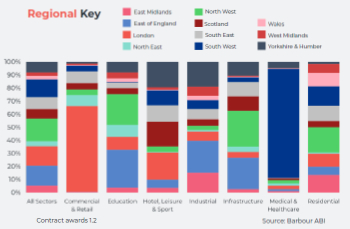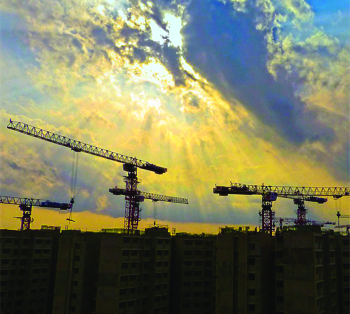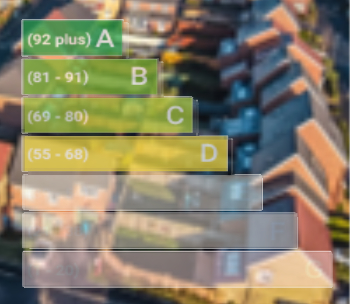The Future of Electricity in Domestic Buildings
by Andrew Williams --BRE 28 November 2014.
This paper reviews some of the key issues surrounding the supply, distribution and use of electricity in domestic buildings. Its primary aim is to consider the electricity system in a holistic, albeit simple, way and identify some of the inter-relationships and inevitable compromises that inherently arise.
By adopting a ‘horizontal’ system-wide review the hope is that the paper stimulates an integrated, system-wide debate surrounding how electricity in domestic buildings will evolve in the future. Only by doing this will electricity generation and consumption be harmonised with national targets and future consumer lifestyle need.
This paper is in response to a number of potentially significant changes in the production and consumption of electricity in domestic buildings, these include:
- Challenging CO2 reduction targets.
- The use of more intermittent renewable and inflexible nuclear generation.
- Smart meters and a potentially more dynamic electricity tariff structure.
- The growth in local generation through, for example, renewable energy installations.
- Electric vehicles and heat pumps.
- Changing appliance and device electricity demand profiles.
- Smart devices (controllable and Internet (IP) addressable).
- Alternative domestic networks.
- Conversion efficiencies.
- Electricity storage.
- Novel control scenarios.
The paper focuses on on-grid domestic buildings only and considers how the changing supply environment driven by the need to reduce carbon emissions and ensure security of supply will impact the domestic electricity installation and the consumer in the future. The paper questions whether there are alternatives to the existing 230 V AC domestic electricity system and, if so, how they compare today and how they might evolve to meet the future of electricity.
The paper breaks the electricity system down in to its component parts and by doing so attempts to disaggregate the functional performance of each part and identify its potential strength and weakness. Each component or building block can then be considered in the context of the existing 230 V AC electricity system or how it might work with any new solution or technology that may come along in the future. Also, by taking this approach new ideas or solutions that may have several distinct strands of technological or market benefit can be deconstructed to identify the parts that are backwards compatible with the existing 230 V electricity supply.
By taking a relatively holistic view the paper also brings into sharp focus the compromises that, like in any system, need to be made both in terms of technical performance, practical delivery and financial constraints. There are many apparently very justifiable reasons to optimise the domestic electricity system in the future not least because of micro-generation, the proliferation of low-power, low-voltage DC devices, high-power heat pumps and electric vehicles. While each sub-system might bring advantages, it is a truism that, in general, as a system becomes more bespoke it often becomes less flexible.
While inevitably, new electricity sub-systems will arise in the future based on a case-by-case basis, when taking an overarching view of electricity in domestic buildings, an equally valid question is how can the existing 230 V AC system be made more efficient and flexible in the future? Can it be made more agile and adaptable to a wide range of loads with the help of new hardware, the smart agenda, system integration and intelligence? If it can, then the smart agenda may be able to configure what we have today to maintain its flexibility in terms of the loads it can supply while becoming more bespoke in terms of how and when, and against what outcome, this happens - essentially providing the best of both worlds.
The paper considers the fundamental differences between AC and DC and how these impact practical electricity systems. While AC has dominated electricity supply and demand for many years there are still many situations where DC is used and this is likely to increase with the growth in electronic devices, renewable energy and electricity storage. Whether DC on its own has any real advantages in like-for-like situations over AC is highly dependent on the particular circumstances.
As a result, it brings in to question whether there is one size that fits all and if not whether the technical or commercial reasons are strong enough for more than one electricity system to be introduced into housing up and down the country.
The paper considers the life cycles associated with different components within the electricity system. This is particularly important as they vary widely. The buildings themselves and the existing electricity system can be classed as very slow changing whereas many of the electronic devices that now consume electricity no longer resemble those of ten years ago let alone when the National Grid was established back in 1933.
This raises a debate as to whether there is a better way to supply these new relatively fast changing devices or whether the fact they are fast changing could provide the opportunity for improving the way they perform in relation to the existing 230 V system in the future.
[edit] Related articles on Designing Buildings Wiki
- Articles by the Electrical Contractors' Association (ECA).
- Battery energy storage systems with grid-connected solar photovoltaics BR 514.
- BRE photovoltaic certification scheme.
- Changing patterns in domestic energy use FB 76.
- DC isolators for photovoltaic systems (FB 68).
- Domestic micro-generation.
- Electrical consumption.
- Electrician.
- Electricity supply.
- Five important factors to consider before installing solar panels.
- Flexible electrical networks for a low carbon future.
- Flexible Solar Panels.
- Glossary of electrical terms.
- Kilowatt hour.
- Micro-grids
- Portable Appliance Testing (PAT).
- Power factor.
- Power over ethernet.
- Power over USB.
- PV inverter.
- Switchgear.
- Service life of products.
- Ubiquitous sensors to assess energy consumption and wellbeing in domestic environments.
- Voltage.
Featured articles and news
Great British Energy install solar on school and NHS sites
200 schools and 200 NHS sites to get solar systems, as first project of the newly formed government initiative.
600 million for 60,000 more skilled construction workers
Announced by Treasury ahead of the Spring Statement.
The restoration of the novelist’s birthplace in Eastwood.
Life Critical Fire Safety External Wall System LCFS EWS
Breaking down what is meant by this now often used term.
PAC report on the Remediation of Dangerous Cladding
Recommendations on workforce, transparency, support, insurance, funding, fraud and mismanagement.
New towns, expanded settlements and housing delivery
Modular inquiry asks if new towns and expanded settlements are an effective means of delivering housing.
Building Engineering Business Survey Q1 2025
Survey shows growth remains flat as skill shortages and volatile pricing persist.
Construction contract awards remain buoyant
Infrastructure up but residential struggles.
Home builders call for suspension of Building Safety Levy
HBF with over 100 home builders write to the Chancellor.
CIOB Apprentice of the Year 2024/2025
CIOB names James Monk a quantity surveyor from Cambridge as the winner.
Warm Homes Plan and existing energy bill support policies
Breaking down what existing policies are and what they do.
Treasury responds to sector submission on Warm Homes
Trade associations call on Government to make good on manifesto pledge for the upgrading of 5 million homes.
A tour through Robotic Installation Systems for Elevators, Innovation Labs, MetaCore and PORT tech.
A dynamic brand built for impact stitched into BSRIA’s building fabric.
BS 9991:2024 and the recently published CLC advisory note
Fire safety in the design, management and use of residential buildings. Code of practice.























